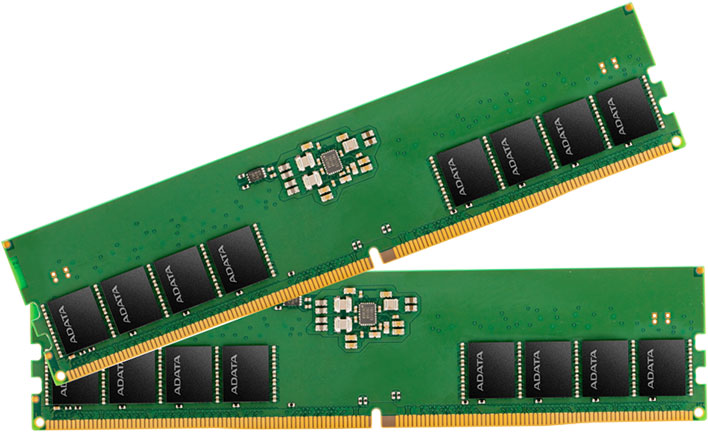Adata To Produce DDR5 Memory Modules With Up To Blazing Fast 8400MT/S Speeds

It has been a nice, long run for the DDR4 standard, and while it is not exactly coming to a complete end, DDR5 is poised to replace it in the not-too-distant future. On next-gen platforms, anyway. Incidentally, Adata has been collaborating with MSI and Gigabyte on its upcoming DDR5 memory modules, which will feature much faster speeds than DDR4.
Next-gen DDR5 RAM is among the hardware lineup that Adata plans to showcase at the Consumer Electronics Show (CES) next week. It will also have on tap some PC cases, SSDs, an all-in-one liquid cooler, and another PCIe 4.0 SSD, among other things (including gaming gum, of all things).
"The future of DRAM is here in the form of the Adata DDR5 DRAM module. Compared to its predecessors, this module will provide a significant speed boost, higher capacities, and reduced power consumption and increased bandwidth per CPU cores. The new DDR5 module will offer up to four times higher capacities, reduced power consumption to 1.1V, and speeds of up to 8400MT/s," Adata says.
Not all DDR5 RAM will be of the 8,400MT/s variety. However, it will generally pick up around where DDR4 leaves off. Granted, there are some ultra-enthusiast DDR5 memory kits, like Crucial's 16GB Ballistix Max DDR4-5100, but that sells for $900. In comparison, there are several 16GB DDR4-3600 kits that sell for under $100. It's generally expected that DDR5 will start out at 4,800MT/s, and it's worth noting that JEDEC finalized the DDR5 standard last year.
"In parallel to developing the new memory modules, Adata has also been working closely with two leading motherboard makers MSI and Gigabyte, its long-term strategic partners, to ensure their new platforms can take full advantage of DDR5. Among other initiatives, Adata, MSI, and Gigabyte have been conducting joint testing and research to guarantee optimum DDR5 overclocking on the latest Intel platforms to meet gamers' discerning standards," Adata added.
It remains to be seen what kind of real world difference the jump to DDR5 will make, in terms of overall performance. That might be difficult to isolate, given that DDR5 will show up on next-gen platforms, including Alder Lake-S (Intel) and presumably Zen 4 (AMD) later this year.
Beyond raw performance, one interesting thing about DDR5 is that it will feature on-die ECC (error correcting code). Linus Torvalds, the creator of Linux, recently went on a rant accusing Intel of basically killing the consumer market for ECC RAM. Whether or not he is right will largely be a moot point with the introduction of DDR5.

